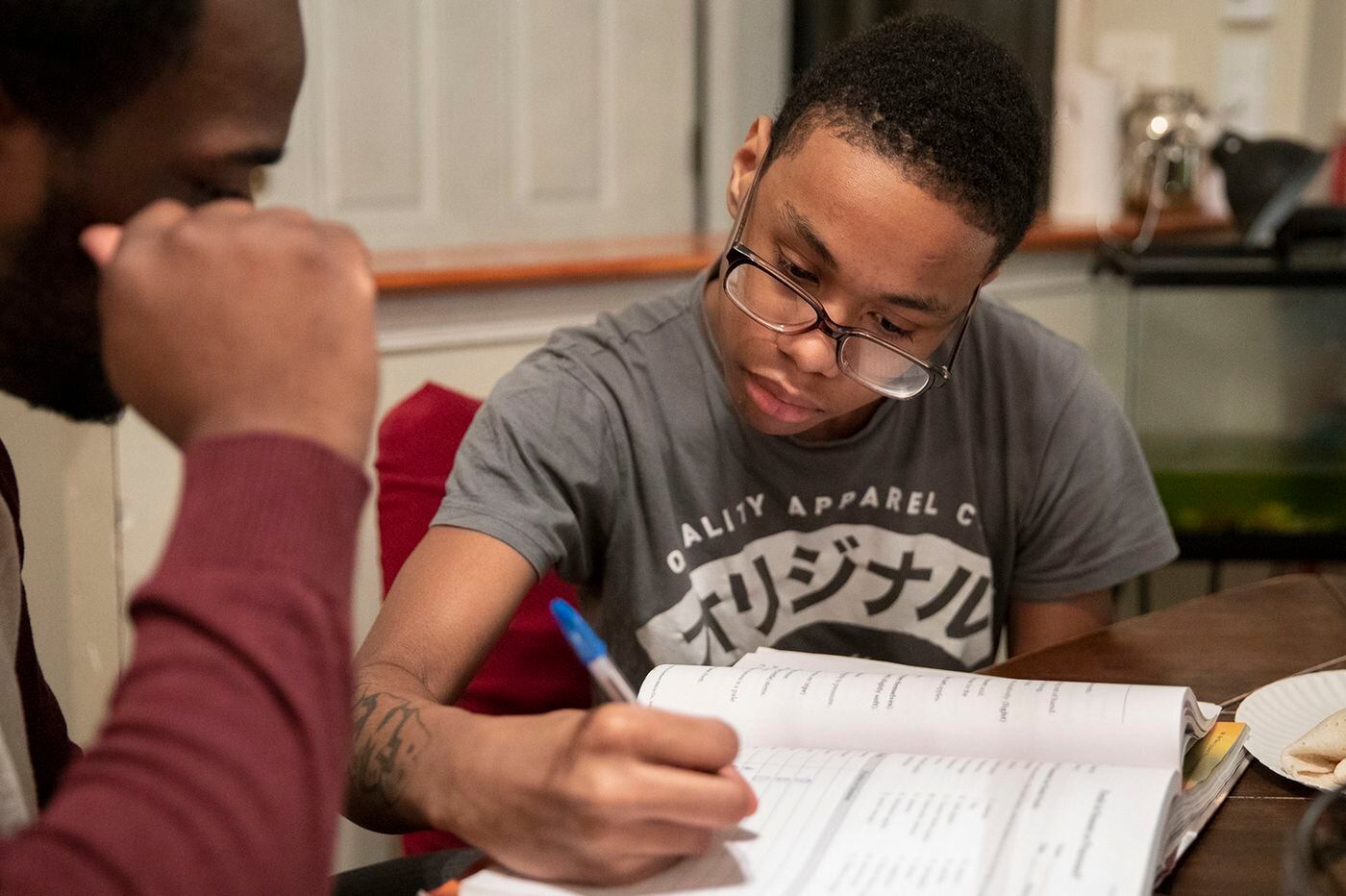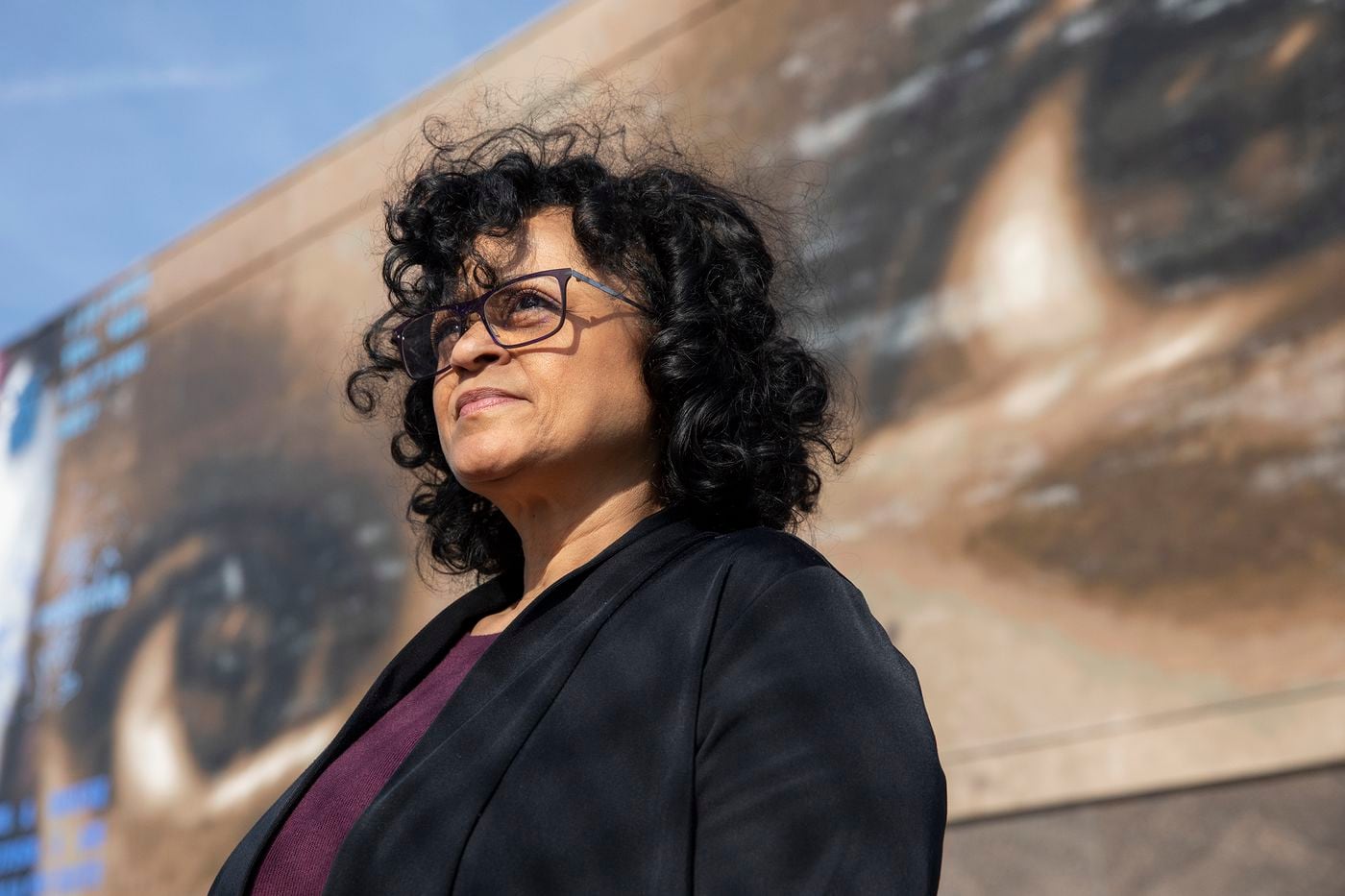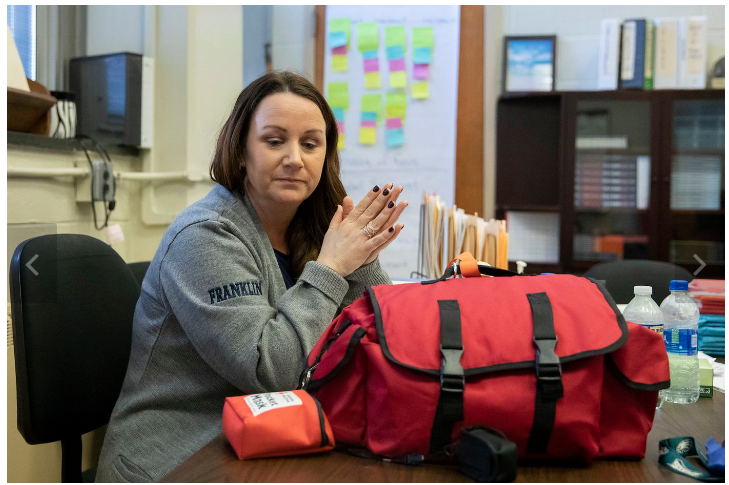Posted by by Tom Avril, Updated: March 7, 2019 on Apr 7th 2020
This teenager’s heart stopped, and a teacher grabbed the one thing that might save him: an AED
This teenager’s heart stopped, and a teacher grabbed the one thing that might save him: an AED
Taj Nixon and his friends burst into April Williamson’s music classroom a few days after Thanksgiving, excitedly sharing the news that one of them had gotten into an accelerated school program. His heart beating fast, Taj sat down at a desk for a minute while the others kept chatting.
Abruptly, he slumped sideways and fell to the floor.

The 10th grader’s body began to shake. Friends ran to his side in alarm. Williamson grabbed the phone in her room at Benjamin Franklin High School and called school nurse Donna Santos.
“I think he’s having a seizure!” the music teacher cried.
In fact, Taj had suffered a sudden cardiac arrest. The North Philadelphia teenager’s heart had stopped beating, at least in the normal sense. It was quivering dangerously with an abnormal rhythm called ventricular fibrillation. The seizurelike symptoms were the result of a grim reality: His brain was being starved of oxygen.
Santos dashed in and determined he was not breathing and had no pulse. With the help of other teachers who appeared on the scene, she began performing CPR, circulating whatever oxygen remained throughout the teenager’s lanky frame. But she knew that if Taj had any chance of making it, she would need the backpack-size device that lay upstairs in the school office: an automated external defibrillator (AED).
As of 2016, thanks to a mix of public and private funds, all city public school buildings are equipped with at least one AED — more than 300 of the devices in all.
On Nov. 28 at Franklin High, the program was put to the test.

HEATHER KHALIFA / STAFF PHOTOGRAPHER
Nurse Donna Santos poses outside Benjamin Franklin High School, where she used a defibrillator to try to revive Taj Nixon, a 10th grader who collapsed on Nov. 28.
Out of the blue
Not to be confused with a heart attack, in which blood flow to the heart is obstructed, sudden cardiac arrest means just that: Abruptly, the heart stops pumping. In young people, it is typically triggered by an abnormality in the heart muscle or a fault in the organ’s electrical system.
The total number of cases in youths is unclear, as hospitals are not required to report the condition, but sample statistics suggest it happens to hundreds of teenagers each year on school grounds. When including adult visitors and school employees, University of Washington researchers estimated that one in 73 high schools are the site of a sudden cardiac arrest each year.
An AED does not work for certain kinds of heart stoppage, but the number of cases is more than enough to warrant having one of the devices on hand, advocates say. The safety net needs to be where the people are, and an estimated 20 percent of the population sets foot in a school building on any given weekday, said Victoria Vetter, a Children’s Hospital of Philadelphia cardiologist who has helped push to get the devices in schools.
“There are very few places where you get that kind of congregation of people,” she said.
And when sudden cardiac arrest happens in a young person, often there are no warning signs.
That was the case with Taj — an easygoing 15-year-old who always had a joke for peers and grownups alike. He seemed in good health, able to play sports with friends, though he had gone to the hospital several times with asthma attacks when younger. No one in his immediate family had signs of heart trouble.
Yet there he lay, bleeding where his forehead had struck the classroom’s tiled floor.
“Get the AED!” Santos yelled as she began CPR. “Call 911!"


HEATHER KHALIFA / STAFF PHOTOGRAPHER

HEATHER KHALIFA / STAFF PHOTOGRAPHER

Special-education teacher Danielle Eib grabbed the AED from a cabinet in the school office and ran to Williamson’s classroom, handing the boxy orange device to school police officer Dorothy Hanton.
The music teacher cut open the boy’s shirt with her classroom scissors. The police officer popped the lid on the AED, revealing a pair of defibrillator pads wrapped in protective foil. The nurse tore open the wrapping and placed one pad on each side of the boy’s chest.
Then she prayed.
‘I can’t focus!’
Two miles away in West Philadelphia, Yolanda Nixon was at work at a day-care center when her cell phone rang.
It was the school calling. Something was wrong with her son.
She ran, not even stopping to tell her boss. Nixon jumped in her car and drove to pick up daughter Takirra, 20, who worked at another day-care center around the corner.
“You need to drive me,” Nixon pleaded. “I can’t focus!”
In the classroom, an automated voice boomed from the defibrillator, issuing instructions to the three school staff members who were now working to revive Taj.
The nurse breathed into his mouth, trying to replenish his supply of oxygen while the defibrillator measured his vital signs. Counselor Kadedra Haynes and athletic director Dennis Sheedy took turns applying chest compressions — matching the rhythm of the recorded voice as it shouted: “Compress! Compress!”
Then the voice shouted, “Shocking the patient!” And they paused.
Taj’s body jerked a little. But otherwise, there was no response. At the machine’s direction, the teachers started compressions once again.
Precious minutes
A portable defibrillator works by rebooting the cells in the heart, ideally enabling the organ to restart with a normal rhythm. The latest model the School District has purchased costs about $1,300.
Being shocked is no guarantee of survival. Certain types of cardiac arrest are not “shockable,” and even for those that are, defibrillation is not always successful. But there is no downside to trying it, and it represents the best chance a person has, said Vetter, the CHOP cardiologist.
“Nobody should be afraid of doing this,” she said.
Among school-age children who suffer an out-of-hospital ventricular tachycardia or ventricular fibrillation — the type of erratic quivering in Taj’s heart — the use of an AED means better than a 50 percent chance of survival, she said. In a school setting, the survival rate may be as high as 85 percent, as personnel are trained to act fast, Vetter said. But with every minute without the use of CPR and an AED, the chance of survival drops 10 percent.
The machine shocked Taj once again, and something happened. He took a long, shuddering breath but couldn’t keep it up.
The voice from the machine directed the teachers to apply more chest compressions, then delivered a third shock. No good. Still more compressions, followed by a fourth shock.
At last, the teenager started to breathe on his own.
And finally, the ambulance crew arrived. Santos said it took them more than 15 minutes — far too long to save Taj from harm if the AED had not been available. The city Fire Department, which operates the ambulance system, declined to comment, citing patient privacy rules.
The ambulance crew gave Taj oxygen and intravenous medicine to stabilize him. They drove off to Hahnemann University Hospital, arriving just as the boy’s mother and sister pulled up. Despite the prompt resuscitation, doctors were concerned about the minutes his brain had gone without oxygen, and later that day he was transferred to CHOP. Did the cardiac arrest damage his brain?
‘No homework’
One of Taj’s favorite teachers, culinary-arts instructor Keith Pretlow, was not at school the day the boy’s heart stopped. When Pretlow heard, he went straight to the hospital, finding the boy sedated, covered with wires and tubes.
The teacher went back the next day, and again after that, as the teenager’s mother and family members kept an anxious vigil. Every so often, Taj opened his eyes a little. But as the sedatives wore off, he became agitated. When he spoke, he did not make much sense.
On day four, Pretlow tried a joke: “You’ve got to do your homework!”
“I ain’t got no homework,” Taj shot back.
It was a good sign, but only the start of a long recovery. And a key question remained: Why did it happen?
In young people, half of sudden cardiac arrests are tied to an enlargement or thickening of the heart muscle. One-quarter are triggered by a structural flaw in some aspect of the heart’s anatomy, such as a valve. An additional 15 percent are due to an electrical abnormality. The rest are “acquired,” including cases caused by infection and drugs.
There was no indication Taj had one of the acquired cases. And on an MRI, his heart’s anatomy appeared normal. But that did not rule out a muscular problem, as some do not show up on an MRI. A better picture may emerge from genetic tests, but sometimes the cause is unclear.
To his mother, his collapse seemed to have come from out of the blue.
“No signs," Yolanda said. “No fever. No sickness. Just random.”
The more immediate issue was to get Taj back on track. On Dec. 10, physicians implanted a permanent defibrillator under the skin near his armpit, so he’d be protected if his heart ever stopped again. Two days later, he moved to a rehab facility. He was walking fine but struggling with his memory.
When someone asked him the year, he said “2017.” He recalled the names of family members but not teachers.
In early January, he went home. He is on medication to stabilize his heart rhythm. He is not yet back in school, instead catching up with his studies at home, with oversight from Pretlow.
He is reluctant to talk about his medical odyssey.
Asked what it was like to wake up in the hospital, Taj answered: “Like a regular day.”
Would he rather be doing schoolwork at home or at school with friends?
“It doesn’t matter,” he said. “I’ve seen most of them.”
His brain function is still not 100 percent, but it likely will keep getting better. Some patients continue to improve more than a year later, said Vetter.
At school, the overwhelming feeling is relief. Santos recalled how other school nurses had called or texted to offer praise. “Omigod, I hope it never happens to me,” a few said.
Her response: They could have done the same.
As of 2016, that is true. The safety net has been years in the making, with the first devices donated by St. Christopher’s Hospital for Children in 2001, said Bettyann Creighton, who retired in August as the Philadelphia School District’s executive director of health, safety, and physical education. More came with a mix of public and private funds.
And CHOP helps schools develop a response plan — ensuring that the devices are ready for action. Vetter hears too many stories of defibrillators with dead batteries or dried-out pads that won’t stick to the patient. Or the device is locked in a cabinet, and no one can find the key.
At Franklin High, the device was ready when Taj went down. His mother cannot bring herself to imagine what would have happened without it.
“If he hadn’t been at school that day ...” she said.
She did not finish the sentence. She didn’t need to.
 Saving American Hearts, Inc Education
events in Colorado
official Colorado vacation information
Saving American Hearts, Inc Education
events in Colorado
official Colorado vacation information